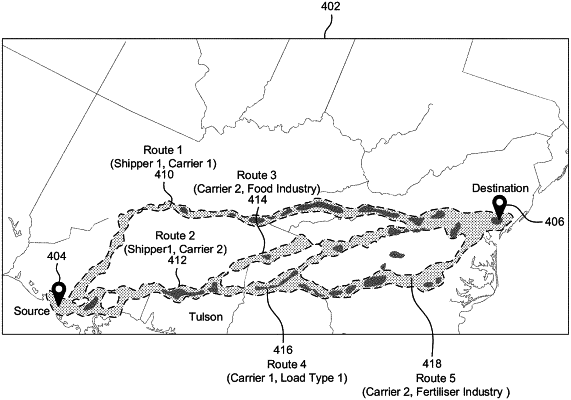| CPC G06Q 10/0833 (2013.01) [G06F 16/29 (2019.01); G06Q 10/0838 (2013.01); G06Q 10/08355 (2013.01)] | 20 Claims |

|
1. A method comprising:
Determining, by a predictive visibility system, a communication error between the predictive visibility system and one or more devices associated with a load being transported by a carrier from a source location to a destination location, the communication error comprising at least one of a system failure associated with the one or more devices and a connectivity failure between the predictive visibility system and the one or more devices;
Determining, by the predictive visibility system, a last observed location of the load prior to the communication error, based on location data received from the one or more devices prior to the communication error;
determining, by the predictive visibility system, one or more predicted locations of the load during the communication error and while the predictive visibility system is unable to receive the location data from the one or more devices, wherein the one or more predicted locations of the load are determined at least partly based on one or more attributes associated with the load;
generating, by the predictive visibility system, a plurality of predicted routes of the load from the last observed location of the load to the destination location, wherein each predicted route of the plurality of predicted routes includes at least one respective predicted location of the one or more predicted locations;
generating, by the predictive visibility system, a load tracking interface that identifies at least a portion of the plurality of predicted routes, wherein the load tracking interface further includes a first visual object type corresponding to the last observed location of the load, and a second visual object type corresponding to each respective predicted location along the identified portion of the plurality of predicted routes.
|